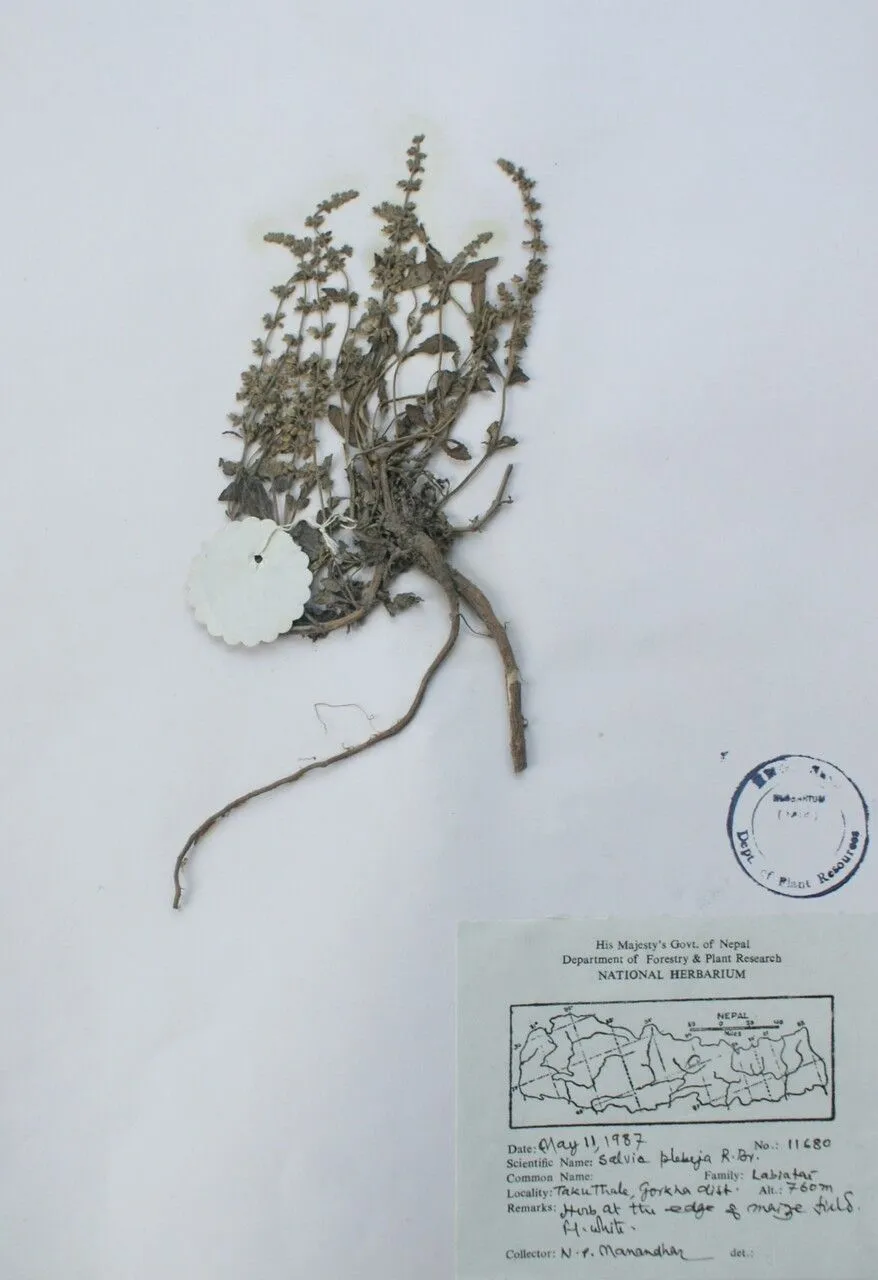
Author: R.Br.
Bibliography: Prodr. Fl. Nov. Holland.: 501 (1810)
Year: 1810
Status: accepted
Rank: species
Genus: Salvia
Vegetable: False
Observations: Iran to S. Russian Far East and Vietnam, N. Sumatera, Philippines (N. Luzon), N. & E. Queensland to E. Victoria
Australian sage, known scientifically as Salvia plebeia, is a notable plant that belongs to the Lamiaceae family. This species was first documented in the early 19th century by the botanist R. Brown, as cited in the Prodr. Fl. Nov. Holland. publication in 1810.
The distribution of Salvia plebeia is quite extensive, spanning several regions across the Eastern Hemisphere. It can be found from Iran stretching to the southern regions of the Russian Far East, and is prevalent in parts of Southeast Asia, notably Vietnam, Northern Sumatra, and the Philippines (particularly in Northern Luzon). Additionally, this versatile plant species extends its presence across Australia, from Northern and Eastern Queensland down to Eastern Victoria.
Australian sage thrives in a variety of climates and geographical locations, making it a plant of considerable ecological adaptability. Its widespread occurrence in such diverse regions underscores its resilience and the varied ecological roles it may play in these environments.
As a member of the mint family, Lamiaceae, Salvia plebeia shares several characteristics common to the family, which include aromatic properties and the typical sage-like appearance of its leaves. This particular species contributes to the rich botanical and ecological tapestry of the regions it inhabits, and its botanical history adds a layer of historical significance to its study and appreciation.
Given its vast habitat range and botanical interest, Salvia plebeia (Australian sage) possesses immense potential for further research in areas such as ethnobotany, horticulture, and conservation. Studying its adaptive mechanisms and interactions within different ecosystems can provide deeper insights into the biodiversity and ecological complexity of the regions it inhabits.
Eng: australian sage, common sage
En: Australian sage, Common sage
Taken May 11, 1987 by Royal Botanic Garden Edinburgh – Ram Chandra Poudel (cc-by-nc)
Taken May 15, 1987 by Royal Botanic Garden Edinburgh – Ram Chandra Poudel (cc-by-nc)
Taken Apr 13, 1974 by Royal Botanic Garden Edinburgh – Ram Chandra Poudel (cc-by-nc)
Taken Apr 20, 1969 by Royal Botanic Garden Edinburgh – Ram Chandra Poudel (cc-by-nc)
Taken Apr 20, 1969 by Royal Botanic Garden Edinburgh – Ram Chandra Poudel (cc-by-nc)
© copyright of the Board of Trustees of the Royal Botanic Gardens, Kew.
© copyright of the Board of Trustees of the Royal Botanic Gardens, Kew.
© copyright of the Board of Trustees of the Royal Botanic Gardens, Kew.
Family: Myrtaceae Author: (F.Muell.) K.D.Hill & L.A.S.Johnson Bibliography: Telopea 6: 402 (1995) Year: 1995 Status:…
Family: Rubiaceae Author: Pierre ex A.Froehner Bibliography: Notizbl. Bot. Gart. Berlin-Dahlem 1: 237 (1897) Year:…
Family: Sapindaceae Author: Koidz. Bibliography: J. Coll. Sci. Imp. Univ. Tokyo 32(1): 38 (1911) Year:…
Family: Asteraceae Author: A.Gray Bibliography: Pacif. Railr. Rep.: 107 (1857) Year: 1857 Status: accepted Rank:…
Family: Fabaceae Author: Medik. Bibliography: Vorles. Churpfälz. Phys.-Ökon. Ges. 2: 398 (1787) Year: 1787 Status:…
Family: Aspleniaceae Author: (Cav.) Alston Bibliography: Bull. Misc. Inform. Kew 1932: 309 (1932) Year: 1932…